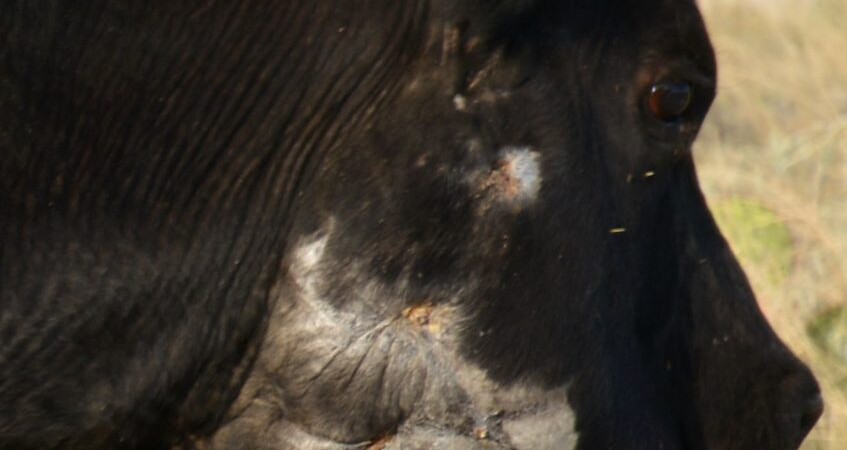

When a sheep is bitten by a poisonous snake, the animal will experience difficulty swallowing, the tongue will protrude limply from the mouth and the animal will dribble saliva. This may be followed by the expulsion of the stomach contents through the nostrils and the sheep lying down, unable to move. Death can occur as a result of respiratory failure, if bitten by a cobra, or the animal could drown in its own saliva.
For goats, symptoms are similar to those of sheep, though goats show less sensitivity to snake venom. However, goats can die from puff adder bites. Surprisingly little research has been done on snake bites in cattle.
However, although the animals are extremely sensitive to venom, it would appear that death occurs only with multiple bites. Other factors that come into play include the amount of venom injected; the size of both the cow and the snake; and the age and health of the animal. A healthy cow is less likely to succumb to the effects of venom than an older individual in poor health. Where it was bitten is also important.
Typically, bites occur on the head, face and muzzle area while the animal is grazing, and are far more serious than bites on the legs. Cattle that have been bitten often show signs of a “goose stepping” type of leg action.
Venomous snakes fall into two categories: elapids, which include cobras and mambas, and vipers, such as puff adders. Elapids have short fangs and tend to “chew” their venom into their victim. The poison affects the nervous system and kills by paralysing the respiratory system. Vipers have long, hinged hypodermic needle-like fangs that penetrate the flesh, delivering venom deep into the tissue. This causes enormous damage to blood vessels and loss of tissue. Localised bleeding and tissue necrosis can occur even in animals which make a full recovery. In some cases, persistent lameness may occur.
However, many snake bites in livestock are thought to be “dry bites”, where no venom is injected. A snake can determine the size of an animal and its venom is a valuable resource it doesn’t waste indiscriminately. Therefore a dry bite is delivered as a warning. It’s also important to remember that not all snakes are venomous. Unless you can positively identify the snake, assume that it has delivered a dry bite if no symptoms materialise.
Some tips
If the animal has been bitten in the nostrils or muzzle, these areas will swell, making it difficult for the animal to breathe. Pass a piece of clean tubing up the nostrils to maintain an open airway. Where the animal shows signs of paralysis, breathing down the tube will help keep it alive until the vet arrives.
Keep the animal calm, as an increased heart rate will spread venom through the body much more rapidly. Let the vet come to the animal rather than trying to walk it to a more accessible spot, as this will only increase its heart rate.
Never cut the wound and try to suck out the venom. If you have a cut in your mouth, you’ll be poisoned as well.
In the case of a cobra bite, apply a pressure bandage over the bite and wrap it up to the top of the limb. This is not a tourniquet as its aim isn’t to stop blood flow, but to slow down the venom’s absorption into the lymph system. (If applied to a viper bite, where swelling develops, this will do more harm than good.)
For viper and spitting cobra bites, simply keep the animal calm, and seek veterinary treatment as quickly as possible.
Do not apply a hot or cold compress, as this could damage the tissue even further.
Do not administer any form of alternative treatment. The only proven treatment for snake bites is anti-venom.
Your vet should be able to determine whether the animal was bitten by a snake, whether or not venom was injected, what type of snake it was and if the animal requires anti-venom. Some animals may recover simply with supportive care.
 Contact Jaguza Support
Contact Jaguza Support